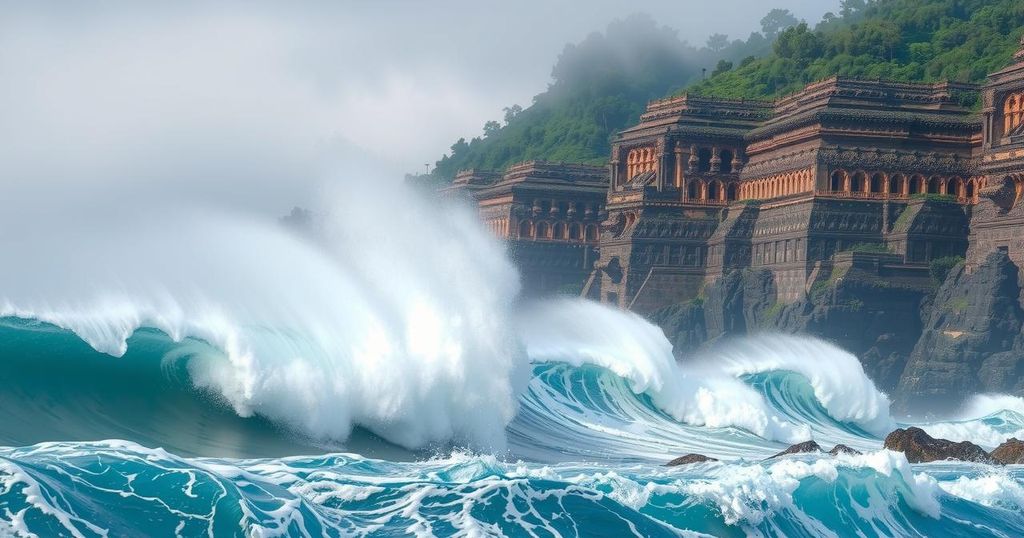Authorities in Peru and Ecuador are warning the public to stay away from the coast due to exceptionally high waves reaching 13 feet, leading to severe flooding, damage to fishing communities, and the closure of numerous ports. At least 30 fishermen were rescued, while many remain stranded. These weather patterns, attributed to climate change, are expected to continue affecting the region well into January.
Authorities in Peru and Ecuador have issued stern warnings encouraging citizens to avoid coastal areas due to unusually high waves wreaking havoc along the shoreline. This phenomenon commenced on Christmas Day, intensifying from December 27 to 28, and is projected to persist until at least January 4. Reports indicate that waves have surged to heights of approximately 13 feet (4 meters), causing severe flooding in coastal communities and leading to the closure of around 100 of the 121 seaports in Peru, notably impacting the northern regions.
The surge in wave height has been catastrophic for local fishing operations, with the Navy rescuing 30 fishermen stranded offshore and reports suggesting that upwards of 180 fishermen remain trapped at sea. The devastation has also been noted in the loss of approximately 100 boats within one community alone. Navy Captain Enrique Varea warned of the potential for continued intensification of the waves, which are already three times higher than typical coastal conditions.
Civil Defense officials attribute this weather anomaly to climate change, attributing it to a combination of strong winds sweeping from as far as the United States and abnormally high tides. They specified that this is a persistent weather pattern rather than a singular event such as a tsunami or freak wave and anticipated that incidents of this nature would escalate as global temperatures rise.
In addition to the impact of the waves, Peru is grappling with the aftermath of an oil spill that affected approximately 10,000 square meters of ocean surface, further exacerbating the environmental crisis. The oil spill, declared an environmental emergency, has polluted several beaches and posed threats to local wildlife.
The holiday season, typically characterized by bustling coastal resorts, has been marred by the destructive waves that have devastated businesses, with reports of fatalities in Ecuador and an ongoing search for additional victims in Peru. The overall impact of this climatic event highlights the escalating dangers associated with environmental changes in the region.
Recent climatic disruptions have raised alarms, particularly regarding the devastating impact of high waves on coastal communities in Peru and Ecuador. Unusually amplified wave activity, attributed to climate change, poses significant threats not only to human safety but also to economic stability in coastal regions reliant on fishing and tourism. The ongoing environmental emergencies, compounded by an oil spill, draw attention to the broader implications of climate-induced weather patterns.
In summary, the coastal regions of Peru and Ecuador are facing extreme environmental challenges as powerful waves devastate communities, leading to rescue operations and significant economic damage. Authorities are reinforcing the urgency to maintain safety as these conditions, exacerbated by climate change, may persist into the new year. The confluence of high tides, escalating weather patterns, and environmental crises underscores the need for a collective response to mitigate future risks and foster sustainable coastal management.
Original Source: www.maritime-executive.com






